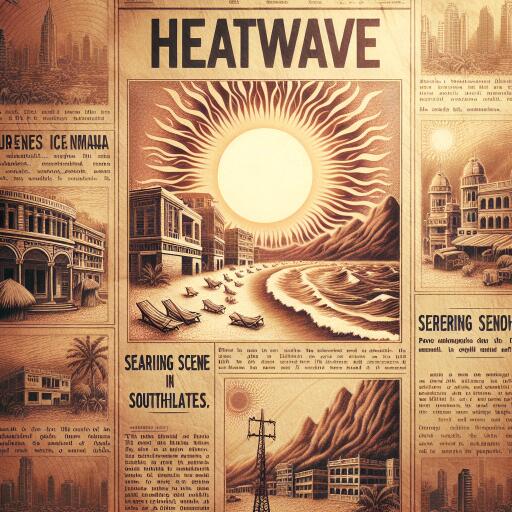
A Hot Blast From The Past: A Look At Heat Wave Reports From Madras
In the annals of weather history, the city of Madras (now Chennai), India, has witnessed its share of scorching summers, episodes that stretch back decades, offering a vivid glimpse into the impact of heat waves on both human and animal life. One of the earliest recorded incidents of a heatstroke-related fatality occurred in May 1926, gripping the readership of the time with its tragic tale.
On that fateful day, a young British soldier, aged just 22, succumbed to the relentless heat of Madras while playing hockey. Overcome by the intensity of the sun, Fusilier Bradshaw ceased his participation mid-game, only to later pass away in the hospital. This incident not only highlights the dangers of heat waves to humans but also marks the beginning of a long history of similar occurrences in the region.
Moving forward in time, the 1970s brought with them a more formal analysis of heat waves in Madras. A noteworthy discussion in this regard was led by Dr. A.A. Rama Sastri, the then-Director of the Regional Meteorological Centre. He provided a clear definition of what constitutes a heat wave: a condition that arises when the maximum temperature of a place soars 6 to 7 degrees Celsius above its average. A “severe heat wave” is declared when this increase reaches 8 degrees Celsius or more. According to his findings, June was a month particularly prone to witnessing these extreme temperature conditions.
The impact of heat waves wasn’t confined to human discomfort or fatalities alone. The animal kingdom also fell victim to these harsh conditions. A poignant report from 1976 revealed a distressing event at the Madras Snake Park, where a severe heat wave led to the death of numerous snakes, including the rare spectacle of a white cobra perishing due to the excessive heat. This incident underscores the broad biological impact of extreme weather conditions, affecting a diverse range of species.
The temperature trends in Chennai, formerly known as Madras, have seen significant shifts over the years, according to research by A. Ramachandran, emeritus professor at the Centre for Climate Change and Disaster Management, Anna University. His studies illuminate a stark change post-1965, marking a period where normal weather patterns began to alter drastically. “It’s the shift towards climatic extremities that’s particularly alarming,” he notes. Unlike earlier times when heat waves were sporadic and lasted a couple of days, the current climate scenario presents a more harrowing picture with prolonged periods of extreme heat.
Professor Ramachandran contrasts past heat wave incidents, primarily caused by natural phenomena, to the current era’s anthropogenic factors. The implication here is profound, suggesting a significant human contribution to the exacerbation of these extreme weather events. This reflects a global environmental concern, echoing the urgent need for addressing human impacts on the climate.
The historical and ongoing narrative of heat waves in Madras/Chennai not only provides insight into the physical and biological impacts of such events but also serves as a stark reminder of the accelerating pace of climate change. As we sift through these accounts from the past, they underscore the critical importance of both understanding and mitigating our influence on the planet’s climate systems. The lessons gleaned from these incidences are invaluable in guiding current and future actions towards sustainability and environmental stewardship.





Leave a Reply